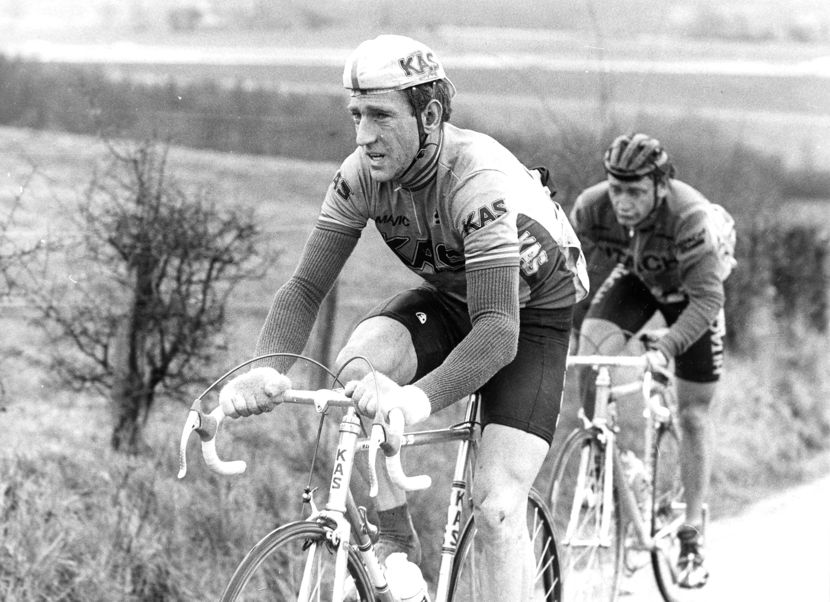Paris-Nice; The Irish Race
Sean Kelly made Paris-Nice his own, in this interview he recalls the moments that helped him win ‘The Race to the Sun’ seven times in a row.
Sean Kelly, his ripped body clad in a white-top black-bottom skinsuit, sweat shining on his pale skin, face grimacing against the gradient as he seals another Paris-Nice victory on the sunlit slopes of Col d’Eze, in the hills above the Cote d’Azur. It was the picture of every spring in the 1980s.
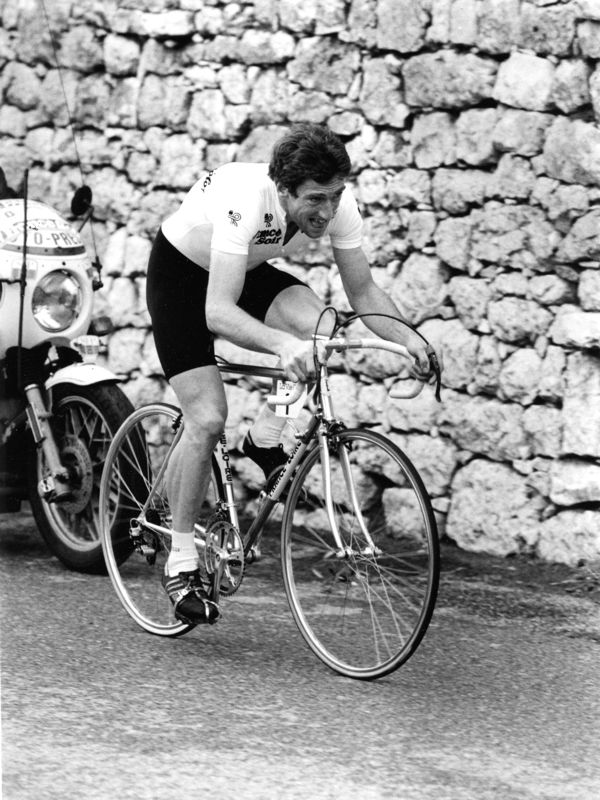
Kelly’s first contact with Paris-Nice was in 1977 at the start of his first year as a pro rider. He was on the French side of the legendary Flandria squad, because it was felt that a French programme was less demanding for a new pro. It was good choice, especially with the campaign the Belgian side took on each year and the quality of riders in it.
The Belgian side of Flandria was a super-team led by reigning world champion Freddy Maertens, and had more big hitters like Marc De Meyer and Michele Pollentier. Working for them could squeeze the young Kelly’s potential, but that potential proved so great, and Kelly so strong and fast in his first races, he was transferred to the Belgian squad and given the job of helping Maertens win.
Kelly lined up at the start of the 1977 Paris-Nice as a 21 years old, with a heavy week in front of him. Maertens won the race, and Kelly got a sharp initiation into the life of a domestique for a big winner. By the end he didn’t fancy a future doing that.
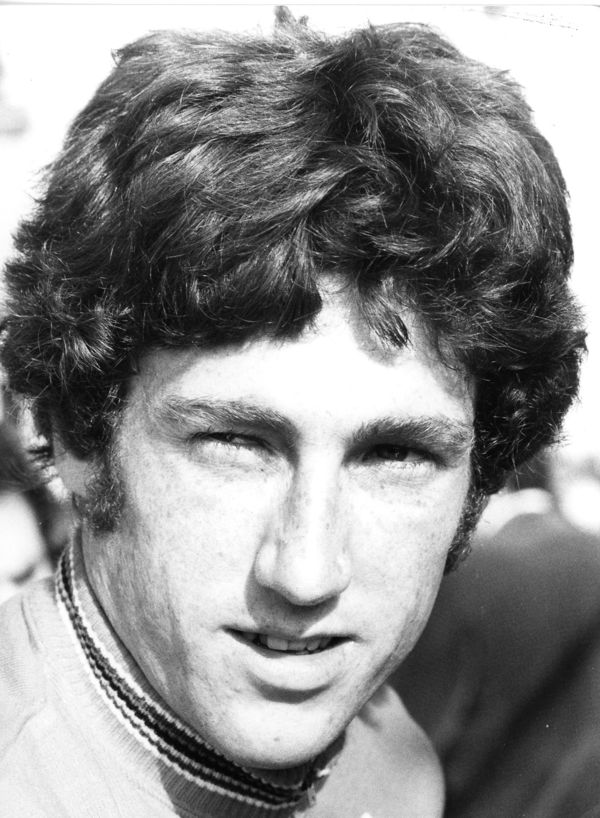
“It was so hard. For three quarters of the stage you looked after Maertens, then you got dropped and ended up five or six minutes down. At the end of the stage you would be crossing the line when he was getting his kisses and flowers on the podium. After that I decided life would be easier back in the French team. I didn’t want to ride too often for Freddy,” Kelly remembers.
But steering clear of the Flandria first team wasn’t easy. Maertens and Pollentier liked and rated the young Irishman. His natural speed meant he was soon leading out sprints for Maertens. But that changed in 1978 when Kelly won his first in the Tour de France, proving he had the potential to be a team leader.
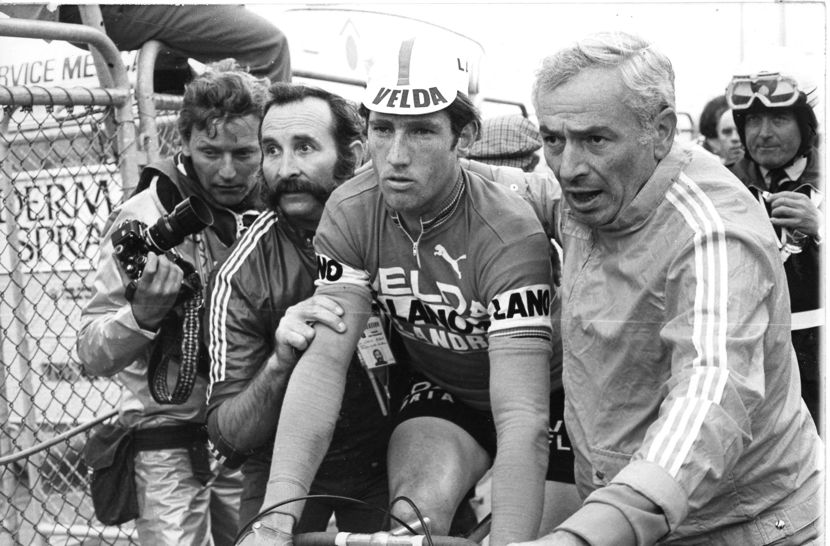 Kelly after his first Tour stage win
Kelly after his first Tour stage winA better contract with the Belgian team Splendor for 1979 saw Kelly develop there, helping riders like Pollentier and the Planckaert brothers, as well as winning when he could. His improvement continued though the next two years until Kelly was strong enough and experienced enough to lead a team of his own.
Kelly’s early career was guided by the man who flew to Ireland to get him to sign his first pro contract in the winter of 1976. Jean De Gribaldy placed him in the Flandria team and oversaw his development in Splendor, now in 1982 he wanted Kelly for the team he ran, Sem-France-Loire. Kelly’s career as a team leader and big-time race winner started that year in Paris-Nice
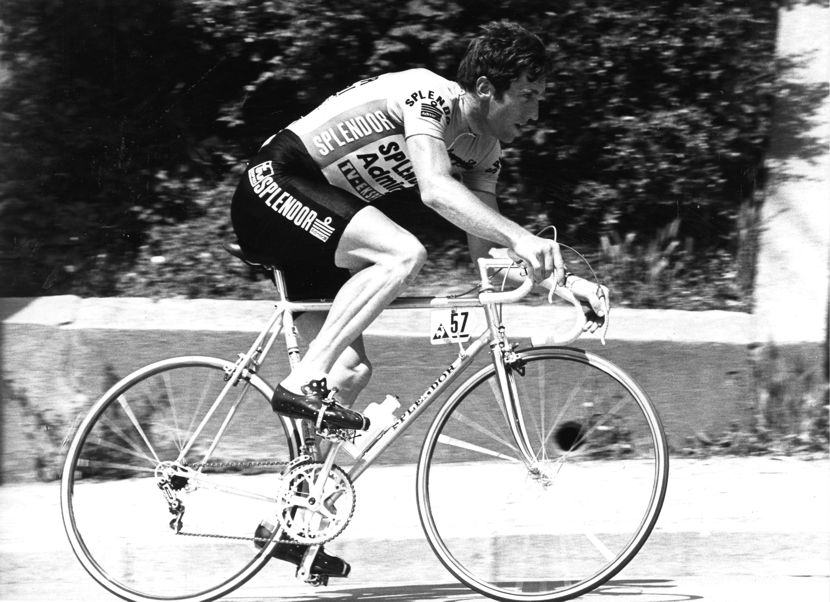 Splendid form in Splendor colours
Splendid form in Splendor colours1982
Before the 1982 season L’Equipe listed 57 prospects who they thought would make their presence felt in 1982, Sean Kelly wasn’t among them. Their massive mistake was obvious when Kelly won the early-season Tour du Haut Var.
“I had a good training programme for the early season when I was younger, so it wasn’t a surprise I went well in the early races. I prepared for them. A bit later, after my first two or three wins in Paris-Nice, I concentrated more on the classics, so I went into Paris-Nice a bit under form, which is why my prologue results were mostly not so good. But I used to get stronger as the race went on,” Kelly explains, reflecting on his long victory run.
Kelly’s sprint saw him take the leader’s white jersey early in 1982, but his rivals weren’t worried. They seriously underestimated how far Kelly had progressed over the winter, seeing only the sprinter he was, not the all-rounder he had become.
The Peugeot team, working for 1980 winner Gilbert Duclos-Lassalle thought Kelly would crumble in the final time trial up Col d’Eze, even though one of their riders told them he might not. The 1981 Paris-Nice winner, Irishman Stephen Roche wasn’t going so well in 1982, but he knew Kelly, and he told reporters; “We in Peugeot are in danger of forming a line behind Zoetemelk in Nice, but why not Kelly? He is the best rider in the peloton at the moment, and nobody can say what he can’t do.”
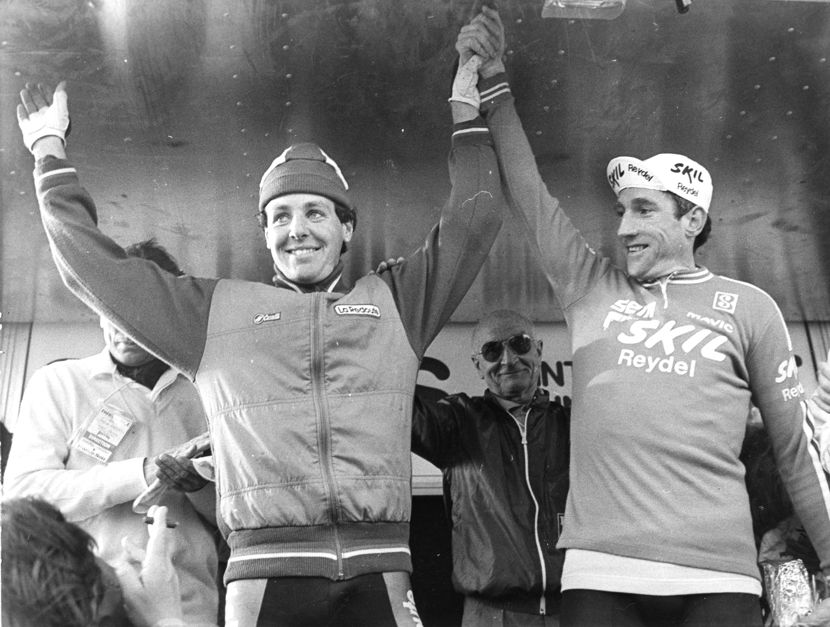 Roche and Kelly
Roche and KellyOn the second last day Kelly lost time and the lead to Duclos-Lassalle after crashing and dropped to second place. The final flat half-stage changed nothing, so Kelly lined up for the Col d’Eze time trial one place on the road ahead of the French race leader.
Duclos-Lassalle was confident, even though his lead was a slender five seconds, but his confidence was misplaced. Roche was right, Kelly romped up the climb, winning the stage and putting 44 seconds into his rival. Paris-Nice number one was his.
1983
Kelly ‘just’ the sprinter had gone, although he still went for every sprint in a stage race to build a cushion of time. “I always used my sprint to go for bonuses, there were bonus seconds for intermediate sprints and in the final, and they soon add up,” he explains.
But going for a sprint caused Kelly to loose time when he crashed early in the race. “After the crash we switched tactics in the team to back Jean-Marie Grezet, who we knew would be able to do a good time trial at the end. I started working for Jean-Marie, but I still carried on sprinting for time bonuses, and I started to get back into contention,” Kelly says.
Joop Zoetemelk emerged as the man to beat, and Kelly was helped by a treacherous misty descent of the Col du Tanneron on the penultimate day. Kelly was always good in such conditions and rocketed down the descent, where Zoetemelk, and Grezet for that matter, were far more cautious. “On a descent like that you think of winning, not of hospital,” Kelly remarked after the stage.
He had the white jersey with only the Col d’Eze time trial to go, and it proved a formality as he killed the climb, almost catching Zoetemelk, who had started two minutes in front of him. Paris-Nice number two was in the bag, plus three stage wins, the points and the mountains competition. Kelly’s Sem squad won the team prize too. Total domination.
1984
Kelly won his first classic, the Tour of Lombardy at the end of 1983 and started the 1984 season with the extra confidence a big victory gives. He wanted a spring classic next, so started Paris-Nice a little behind his best form, but even then he proved impossible to beat.
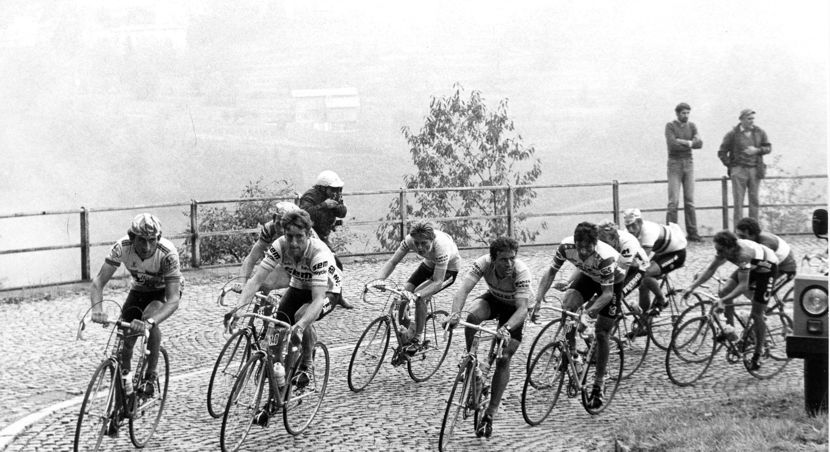 Kelly (front and centre) in Lombardy
Kelly (front and centre) in LombardyStephen Roche tried, he already on his career cycle of brilliant years followed by injury and comeback years, but was good again in 1984. Roche and Kelly were better than the rest, and the race came down to man against man on Col d’Eze. Kelly led his compatriot by 12 seconds, which meant Roche started the climb one place in front of him, and at a distinct disadvantage because the time checks on him would help Kelly spread his effort better.
And so it proved. By half way Roche had reduced Kelly’s overall lead to six seconds, but Kelly refused to panic. “I had checks from the car, and from team-mates standing by the road having done their ride. I always started Col d’Eze a little conservatively, the first bit is the steepest, but it’s important not to go into the red there. You must get into a rhythm and build up slowly,” he says.
Kelly found his rhythm, and in the second half he steadily clawed back the seconds on Roche, but he had to dig deep to do it. “The last two kilometres was the longest sprint of my life,” Kelly says. He got back his six seconds and took one more from Roche, stealing the time trial to take a narrow overall victory. Paris-Nice number three.
1985
Kelly was the world’s number one cyclist now. In the spring of 1984 he won 14 races in two months, including Paris-Roubaix and Liège-Bastogne-Liège. His team, which from 1984 was sponsored by the power tool company Skil, produced other winners too. It was a relatively small outfit run on a fraction of the budget others were, which put pressure on those teams and the riders in them.
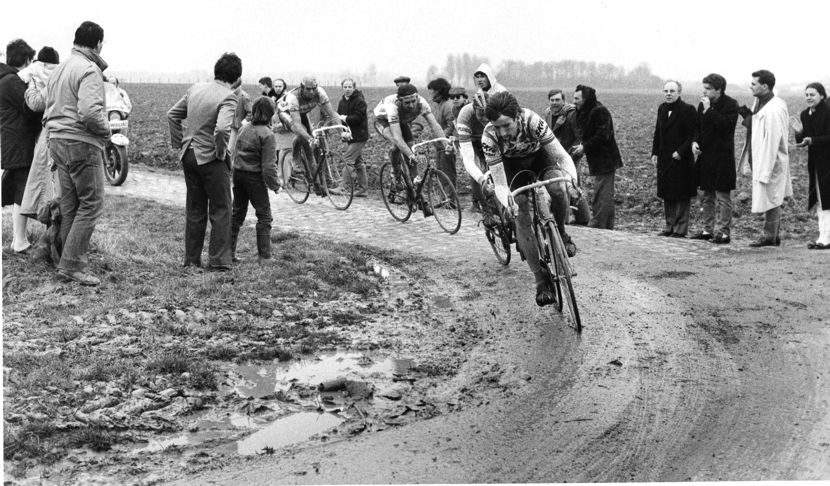 Leading on the Roubaix cobbles in 1984
Leading on the Roubaix cobbles in 1984“We definitely suffered from jealousy in Paris-Nice,” Kelly remembers. “All through the race the Renault team attacked us, and they weren’t trying to win, they were just trying to make us loose.”
Skil was more than equal to it, the team dominated. A young Frenchman called Joel Pelier won the stage to Bedoin and took over the lead, causing manager De Gribaldy to hail him as, “The new Hinault.” It was a bit premature, Pelier was dropped next day on Mont Ventoux, but another Skil rider, Frederic Vichot took over the white jersey. He was only keeping it warm for Kelly.
The Irishman steadily rode into form, climbing steadily up the classification, harvesting time bonuses to do it. Kelly planned a showdown on Col d’Eze, but Renault had other plans. “I think Fignon started it. He attacked on the morning half-stage, before the time trial, and when we brought him back, he went again, and again. Then it was Mottet’s turn to do the same. When it was over I had words with Fignon about it, but he blamed his manager, Guimard,” Kelly says.
Skil controlled all the Renault attacks, even using race leader Vichot to help them do it, and Kelly ran out the overall winner again, with Stephen Roche pipping him by one second on Col d’Eze for the stage. A fourth Paris-Nice for Sean Kelly.
1986
Kelly was in the yellow and blue colours of the Spanish team KAS, still managed by De Gribaldy and still with many of his most faithful riders around him. He was also had terrific form, as he proved by winning the Paris-Nice prologue.
The previous autumn Kelly won a time trial from his home town of Carrick-on-Suir to Clonmel in the Nissan Tour of Ireland. Vocal support from home fans really lifted him at the start, and had given him the confidence to go hard all the way in time trials. “When you can win time trials in the manner I won the Nissan one, it does give you an advantage,” he says.
His rivals tried in Paris-Nice, but no one could shake Kelly. He knew exactly what to do and where to do it; stay close to the lead then go full gas on Col d’Eze. He had done it before, but this was different, Kelly blasted up the climb to beat the hill record held by Raymond Poulidor by over 15 seconds.
“I looked when I was on the race a few years ago, and mine is still the record for the climb we did. When Col d’Eze was in the race more recently they started down nearer Nice and had further to ride. I think Rominger holds the new record, and he has a faster average than me, but he had three kilometres of flat to ride before the climb, which definitely helps to set a higher average speed, and you get you rhythm before the climb,” Kelly says, reflecting now on Paris-Nice number five.
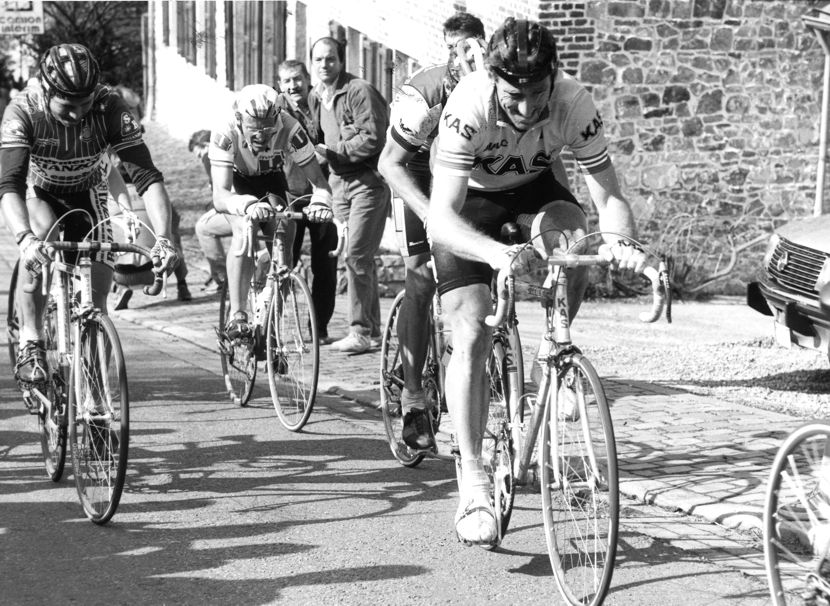
1987
Stephen Roche got the early lead, then lost it to Jean-Francois Bernard, but took it back just before the final day. Meanwhile Sean Kelly was tip-toeing up the classification. The morning stage of the last day rarely decided the outcome of Paris-Nice, but in 1987 it did. Towards the top of the Col de Vence, Roche punctured and Kelly’s team, while not attacking, increased the pace, making it impossible for Roche to get back.
“It’s not something you normally do when the leader punctures, but we had planned to set the pace about 60 kilometres out in order to burn off some of the sprinters, so my team was already going hard on the front. I remember there was a lot of grit laid on the road because of snow and slush,” Kelly says.
“I didn’t say anything to them, but my team mates Jean-Luc Vandenbroucke and Inaki Gaston did up the speed. But what would you do? If we had stopped riding the press would have said I had made an arrangement with Roche. Anyway, on the descent a lot of other teams took over the pace making.”
Roche made a mistake that compounded his problems. Anxious to get back he chased so hard he dropped some team mates who had waited for him, when he would have been better using them on the flat run to the finish. It was more than consolation when Roche the Giro d’Italia, the Tour de France and the world road race championships in 1987. In contrast Kelly was dogged by bad luck that year, but at least Paris-Nice number six was his.
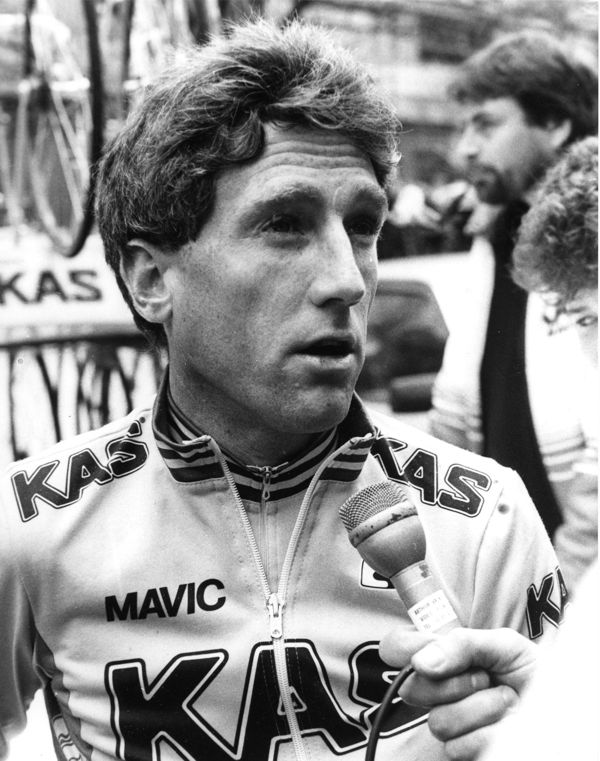
1988
Sean Kelly’s domination of Paris-Nice was due to his class, certainly, but the race suits an all-rounder rather than a Grand Tour specialist. Week-long stage races suit riders who can do a bit of everything, and never was there a better example of that than the way the Irishman won in 1988.
Winning the bunch sprint for second place on stage two, second on Mont Faron to the climber Andy Hampsten, and second in another bunch sprint to Etienne De Wilde in St Tropez saw Kelly leading from Britain’s Sean Yates with two days to go.
A young Breton, Ronan Pensec became his closest rival, but Kelly’s Kas team marked every move Pensec made, even though they’d had a busy week. “Everyone seemed to be against us from day one. If we hadn’t reacted, they would have let Yates ride away and win,” Kelly remembers.
Eventually the scene was set for a Pensec v Kelly showdown on Col d’Eze. Halfway up Pensec led, but Kelly had been here before. Pensec wilted on the second half of the climb, while Kelly went faster and faster, winning the stage by two seconds. He'd won a seventh consecutive Paris-Nice by 18 seconds.
1989
Kelly didn’t defend Paris-Nice in 1989, he rode Tirreno-Adriatico instead. It was his choice; “I was happy not to ride Paris-Nice because I went out the winner, the others never got the chance to knock me off the top. When I went to PDM, they gave me the choice, so I chose Tirreno. Anyway, I was ready for something different by then.”
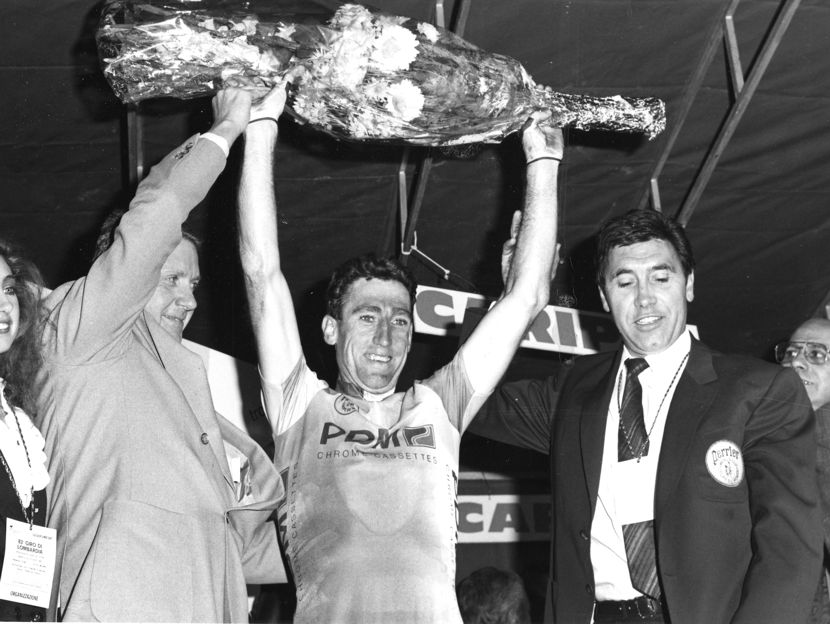
Kelly returned to Paris-Nice in 1990, but crashed at a feeding station and broke his collar bone. Miguel Indurain won instead, and repeated his victory in 1991. Kelly rode that race too, but says, “By then I struggled to find form so early in the year.”
He was approaching the end of his career, but he wasn’t there yet. Kelly found form in 1991, winning his third Tour of Lombardy, which he followed by winning Milan-San Remo the following March, when he out-thought his younger rival in Moreno Argentin. That was it though, San Remo ’92 was Sean Kelly’s last big win in a huge career
